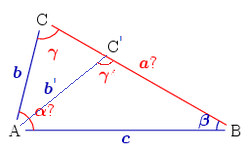DESCRIBE
THE SOURCES OF ERROR IN LEVELING
Many sources of error exist in
levelling and the most commonly met in practice are discussed. Firstly, one of
the sources of error is errors in the equipment which is collimation error. This
can be a serious source of error in levelling if the sight lengths from one
instrument position are not equal, since the collimation error proportional to
the difference in sight length. The line of collimation should be parallel to
the line of sights.
Hence, in all types of levelling, sights should kept equal,
particularly back sights and fore sights. Before using any level it is
advisable to carry out a two-peg to ensure that the collimation error is as
small as possible. Other than that, compensator not working. The function of
compensator is to deviate the horizontal ray of light at the optical center of
the object lens through the center of the cross hairs. This ensure that line of
sight viewed through the telescope is horizontal.
If the reading changes to a different position
each time the footscrew is moved or thr instrument tapped, the compensator is
not working properly and the instrument should be returned to the manufacturer
for repair. Parallax also one of error
in the equipment. Parallax must be eliminated before any readings are taken.
Parallax is occur when the image of the distance point or object and focal
plane are not fall exactly in the plane of the diaphragm.
To eliminate
parallax, the eyepiece is first adjusted until the cross hairs appear in sharp
focus. Then, defects on the staff which
is the incorrect graduation staff cause the zero error. This does not effect
height differences if the same staff is used for all the levelling but
introduces errors if to staves used for the same series of levels. When using a
multisection staff, it is important to unsure that it is properly extended by
examining the graduations on either side of each joint. The stability of
tripods should also be checked before any fieldwork commences .
Secondly, field errors
also source of error. The example of field errors is staff not vertical,
failure to hold the staff vertical will result in incorrect readings. The staff
is held vertical with the aid of a circular bubble. At frequent intervals the
circular bubble should checked against plumb line and adjusted if necessary.
Another example of field errors is unstable ground. When the instrument is set
up on soft ground and bituminous surfaces on hot days, an effect often
overlooked is that the tripod legs may sink into the ground or rise slightly
while readings are being taken.This alters the height collimation and therefore
advisable to choose firm ground on which to set up the level.
After that, handling
the instrument and tripod as well as vertical displacement, the HPC may be
altered for any set-up if the tripod is held or leant against. When levelling,
avoid contact with the tripod and only use the level by light contact through
the fingertips. Then, instrument not level is also the field errors. For
automatic levels this source of error is unusual but, for tilting level in
which the tilting screw has to be adjusted for each reading, this is common
mistake. The best solution is to ensure the main bubble is centralised before
and after reading.
Thirdly, source of error is
the effects of curvature and refraction on levelling. The effect of atmospheric
on the line of sight is to bend it towards the Earth’s surface causing staff
readings to be too low. This is variable effect depending on atmospheric condition
but for ordinary work refraction is assumed to have value 1/7 that of curvature
bit is of opposite sign. The combined and refraction correction is c + r =
0.0673 D². If longer sight lengths must be used, it is worth remembering that
the effects of curvature and refraction will cancel if the sight length are
equal. But, curvature and refraction cannot always be ignored when calculating
heights using theodolite methods.
Lastly, source of error is
reading and booking error and also weather conditions. Source of reading error
is the sighting the staff over too long a distance, when it becomes impossible
to take accurate readings. It is , therefore, recommended that sighting
distances should be limited to 50m but, where absolutely unavoidable, this may
be increased to maximum of 100m. For weather conditions, when it windy will
cause the level to vibrate and give rise to difficulties in holding the staff
steady. In hot weather, the effect of refraction are serious and produce a
shimmering effect near ground level. The reading cannot be read accurately.








![{\displaystyle {\frac {a-b}{a+b}}={\frac {\tan[{\frac {1}{2}}(\alpha -\beta )]}{\tan[{\frac {1}{2}}(\alpha +\beta )]}}.}](https://wikimedia.org/api/rest_v1/media/math/render/svg/3b7a4a3592aa66976f1d34bbbb403daa392f9fdf)

![{\displaystyle {\begin{aligned}\alpha &=\arccos {\frac {b^{2}+c^{2}-a^{2}}{2bc}}\\[4pt]\beta &=\arccos {\frac {a^{2}+c^{2}-b^{2}}{2ac}}.\end{aligned}}}](https://wikimedia.org/api/rest_v1/media/math/render/svg/468caceefca9cadbcccf4071a44d9c3107dd5b33)











